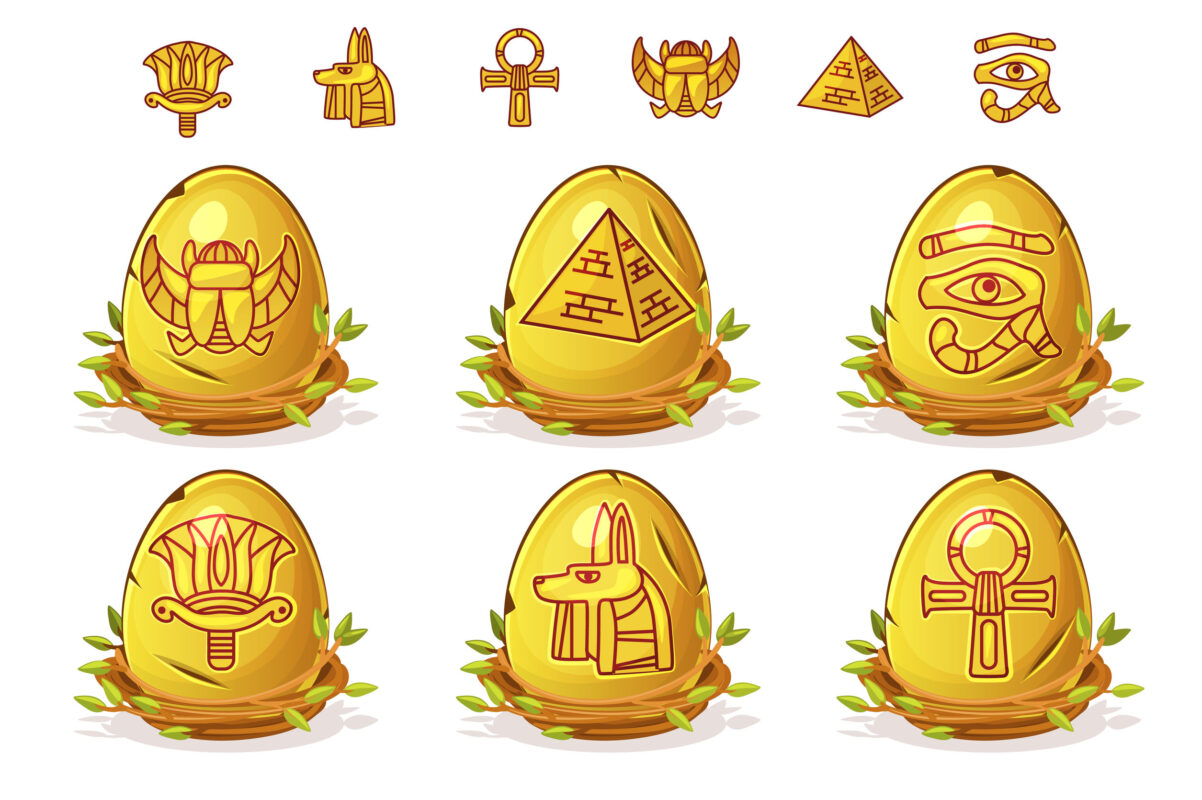You know it is Sham El Nessim time since every garden and park is loaded with families gathering to celebrate around their favorite meals of salted fish and onions. Kids play around and make new friends during the picnic. Despite the financial outlook and the preferred destination to spend the vacation at any of Egypt’s cities, anywhere you land onto, you will find the restaurants offering the Signature Sham El Nessim dishes, snacks, decoration of giant-colored eggs, and flowers fills any place complementing the springtime as well.
Well, where did all these traditions come from initially? Yes, the answer is always the Ancient Egyptians. The word “Sham El-Nessim” was derived originally from the pharaonic term “Tshom Ni Sime,” which means gardens. Easter roots link back to the astronomic occasion; it was the spring festival kick-off indicator where families head to the parks with their picnic stuff all packed and ready to enjoy the sun and a delicious lunch of salted fish, onions, and eggs.
Eggs and Onions to complement the Easter Lunch
The ancient Egyptian folklores say that Egyptians used to boil eggs and color them in different designs and write their wish list. Store these eggs in handmade baskets of palm and leave them on the houses’ roofs overnight, aiming that all of their wishes will get answered by dawn by the gods.
Onions are found among Easter feast antiquities stories as well. One of the king’s daughters had an incurable disease, and when she tried the onions juice, it worked like magic, and her health condition immediately improved. Noting that all the doctors tried different remedies, all did not work or show any indication of improvement. The day the king’s daughter recovered was announced an official celebration for the sake of onions.
That’s the beauty of the Ancient Egyptian Civilization, a rich history that manages to keep influencing our modern life across all changes. The ancient Egyptians’ traditions hold striking and shape the way we celebrate Easter throughout the centuries.
شم النسيم والحضارة المصرية القديمة
جاء فصل الربيع لتزدان الحدائق والمتنزهات بالتجمعات الأسرية احتفالا بشم النسيم والاستمتاع بتناول وجباته المفضلة من الأسماك المملحة والبصل. جاء الربيع ليمنح الأطفال وقتًا للمرح واللعب والتعرف على أصدقاء جدد أثناء النزهة، و بغض النظر عن التكلفة المالية أو المكان المفضل لقضاء الإجازة في أي مدينة مصرية. ففي أي مكان تذهب إليه به ستجد المطاعم التي تقدم الوجبات المميزة لشم النسيم والبيض الملون وباقات الزهور التي تملأ كل مكان احتفالا بالربيع.
لكن ما هو أصل كل هذه العادات؟ الإجابة هي قدماء المصريين. فأصل كلمة “شم النسيم” يعود إلى كلمة “تشوم ني سوم” الفرعونية والتي تعني “الحدائق”. يعود أصل شم النسيم للحدث الفلكي حيث بداية فصل الربيع فتتوجه الأسر والعائلات إلى الحدائق والمتنزهات في صحبة المأكولات والمشروبات للاستمتاع بالشمس ووجبة الغذاء المكونة من الأسماك المملحة والبيض والبصل.
البيض والبصل من أساسيات وجبة شم النسيم
تقول الحكايات الشعبية المصرية القديمة أن الفراعنة اعتادوا سلق البيض وتلوينه بأشكال مختلفة ويكتبون عليه أمنياتهم. ثم يتم تخزين البيض في سلال يدوية مصنوعة من النخيل وتركه على أسطح المنازل طوال الليل، بهدف أن تحقق الآلهة أمنياتهم مع حلول الفجر.
جدير بالذكر أنه عُثر على البصل وسط الحكايات القديمة عن شم النسيم. حيث يقال أن ابنة احد الملوك كانت تعاني من مرض عضال وعندما جربت عصير البصل كان له مفعول السحر عليها وتحسنت حالتها الصحية على الفور، على الرغم من محاولة كل الأطباء من تقديم وصفات علاجية مختلفة إلا أنها جميعا باءت بالفشل. وصار اليوم الذي شفيت فيه ابنة الملك هو اليوم الرسمي للاحتفال بالبصل.
ذلك هو جمال الحضارة المصرية القديمة وتاريخها الثري الذي نجح في الحفاظ على تأثيره على الحياة العصرية مع مرور كل هذه التغيرات. حيث حافظت العادات المصرية القديمة على بقائها وحددت ملامح الطريقة التي نحتفل بها بشم النسيم اليوم وعبر كل العصور.

